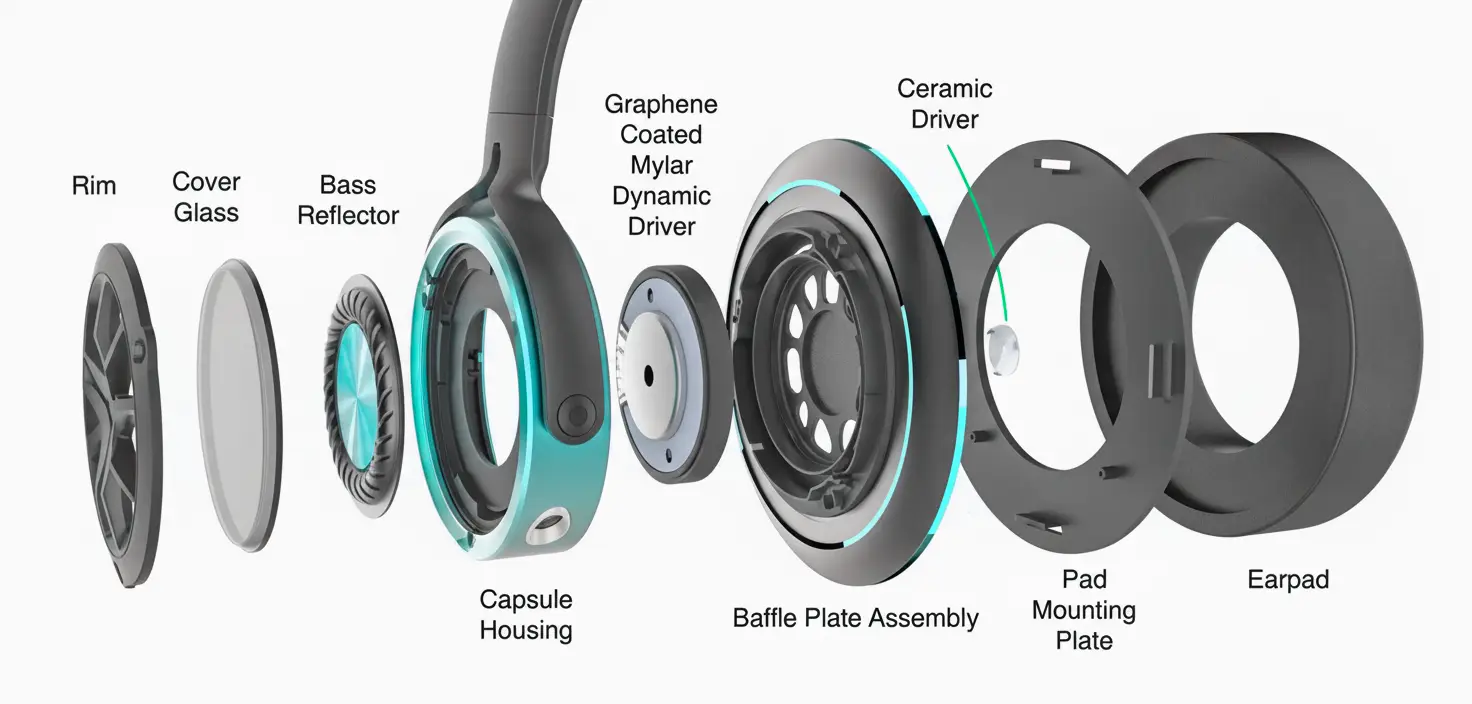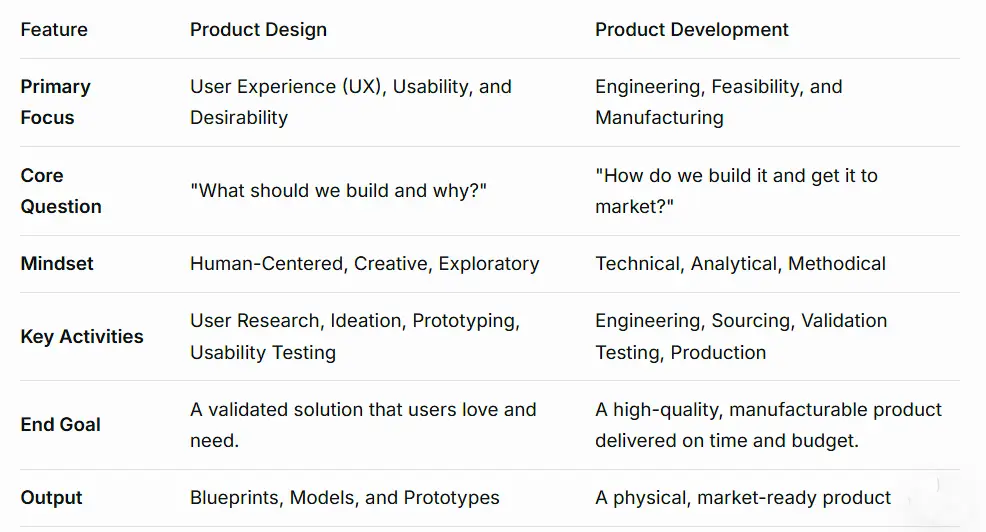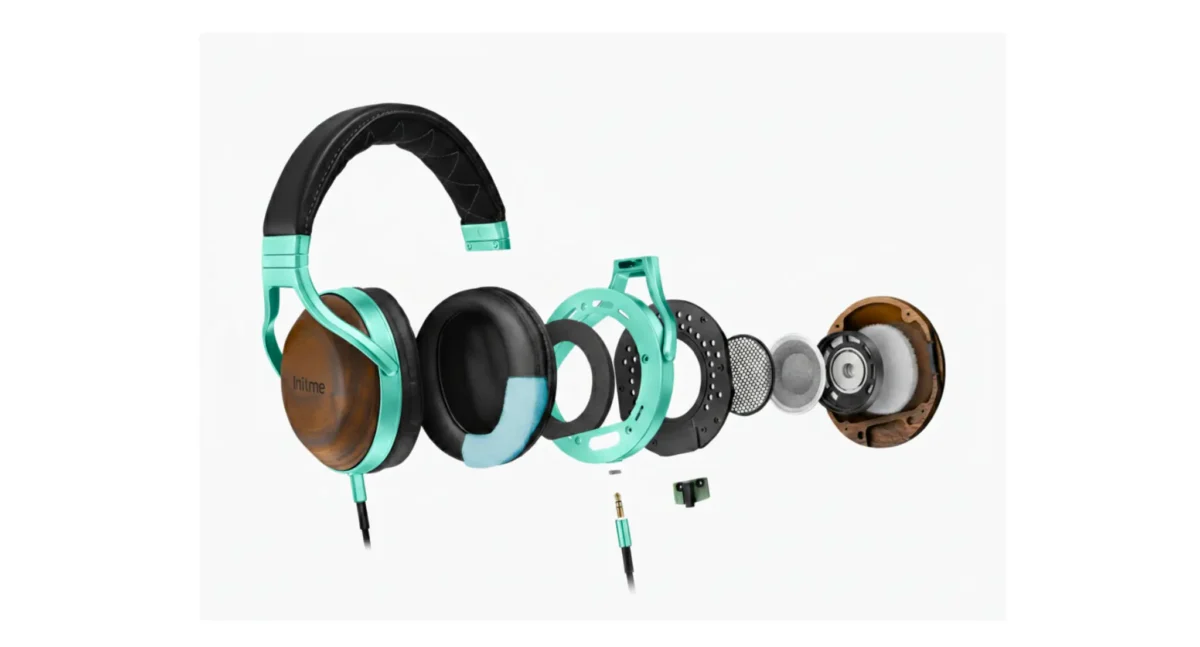You have a game-changing idea for a new product. It’s the kind of idea that keeps you up at night, buzzing with potential. But how do you turn that spark into a tangible, successful product that people will love and buy? This is where the journey begins, and it’s a path paved with two distinct, yet deeply intertwined, disciplines: Product Design and Product Development.
At first glance, these terms are often used interchangeably. Many people, even those in business, mistakenly believe they are the same thing. This confusion can lead to misaligned teams, wasted resources, and products that miss the mark.
At Shark Design, a product design and development company based in the USA, we see these not as separate tasks, but as two vital chambers of the same heart. One cannot function without the other. Understanding their unique roles and how they collaborate is the secret sauce to creating products that don’t just exist, but excel.
So, let’s dive in and demystify the crucial difference between product design and product development.
The Core Analogy: Building Your Dream House
Imagine you’re building your custom dream home.
- Product Design is the work of the Architect and Interior Designer. They sit with you to understand your lifestyle, your needs, and your dreams. They ask: How will you use this space? What feeling should each room evoke? They create detailed blueprints, 3D models, and material samples. They focus on the user experience, the flow from room to room, the amount of natural light, the ergonomics of the kitchen. This phase is all about answering the “What,” “Why,” and “For Whom.“
- Product Development is the work of the General Contractor and Construction Crew. They take the architect’s blueprints and make them a reality. They source the materials, pour the foundation, frame the walls, and install the plumbing and electrical systems. They manage the budget, the timeline, and the permits. They focus on the practical execution, ensuring the house is structurally sound, up to code, and built to last. This phase is all about answering the “How” and “When.“
You wouldn’t want a construction crew building without a blueprint, and you wouldn’t want an architect designing a house that’s impossible to build. The same is true for any product, from a smartwatch to a kitchen gadget.
Part 1: What is Product Design? (The “Why” and “Who”)
Product Design is the strategic process of identifying a user problem and defining a solution for it. It’s the foundation upon which everything else is built. This phase is inherently human-centered, empathetic, and creative.
The primary goal of product design is to create a product that is useful, usable, and desirable.
Key Stages of the Product Design Process:

- User Research and Empathy: This is detective work. Designers immerse themselves in the world of the potential user. Through interviews, surveys, and observation, they seek to understand their pain points, motivations, and behaviors. Who are we designing for, and what problem do they desperately need to solve?
- Ideation and Conceptualization: Here, the brainstorming begins. Using insights from the research, the design team generates a wide array of ideas, no matter how wild. Techniques like sketching, mind-mapping, and storyboarding are used to explore every possible solution.
- Prototyping: This is where ideas get physical. Designers create low-fidelity prototypes (which can be simple paper models or digital wireframes) and evolve them into high-fidelity, interactive models. A prototype is a “rough draft” of the product used to test and validate concepts without investing in expensive tooling or coding.
- Usability Testing: The prototypes are placed in the hands of real users. This is the moment of truth. Designers observe how people interact with the product, identifying points of confusion, friction, or delight. The feedback gathered here is pure gold, used to refine and iterate the design before a single dollar is spent on manufacturing.
The Deliverables of Product Design:
- User Personas (fictional profiles of ideal users)
- User Journey Maps
- Sketches and Wireframes
- Detailed 3D Models and Renderings
- Functional Prototypes
- A comprehensive Design Specification Document
At Shark Design, our product design philosophy is rooted in empathy. We don’t just design objects; we design experiences. We believe that a successful product must connect with the user on an emotional level, solving a real problem in an intuitive and even joyful way.
Part 2: What is Product Development? (The “How” and “When”)
If product design is the blueprint, product development is the construction. It’s the comprehensive process of taking a validated product design and bringing it to life, ready for mass production and market launch. This phase is analytical, technical, and logistical.
The primary goal of product development is to create a product that is feasible, viable, and manufacturable.
Key Stages of the Product Development Process:
- Engineering and Sourcing: Engineers take the approved design and figure out how to make it work in the real world. This involves selecting the right materials, defining manufacturing processes, designing printed circuit boards (PCBs) for electronics, and developing the firmware and software. Simultaneously, the team sources reliable suppliers and manufacturers.
- Prototyping (Engineering Validation): While design prototyping tests the user experience, development prototyping tests the engineering. These are often called “works-like” prototypes. They may not look like the final product, but they function like it, allowing engineers to test mechanics, electronics, and durability.
- Testing and Refinement: The product undergoes rigorous testing for everything from structural integrity and battery life to water resistance and software bugs. This phase ensures the product is safe, reliable, and meets all required quality standards and regulations.
- Manufacturing and Production: This is the final leap. The team works closely with the manufacturer to set up the production line, create molds (for plastic parts), and establish quality control checkpoints. The goal is to ensure every unit that comes off the line is identical and meets the design specifications.
- Launch and Post-Launch Support: The product is packaged, marketed, and shipped to distributors or directly to customers. But the work doesn’t stop there. The development team monitors performance, gathers data, and plans for future iterations, updates, or bug fixes.
The Deliverables of Product Development:
- Engineering Drawings (with GD&T – Geometric Dimensioning and Tolerancing)
- Bill of Materials (BOM)
- Fully Functional Prototypes
- Quality Assurance and Test Reports
- A finalized, market-ready product
Our approach to product development at Shark Design is built on precision and pragmatism. We bridge the gap between a beautiful design and a manufacturable product, ensuring that what looks great on a screen also works flawlessly in a user’s hand and can be produced efficiently at scale.
The Handoff: How Design and Development Dance Together
The relationship between design and development is not a linear relay race where one team hands off a baton to the other. It is a continuous, collaborative dance.
- Design informs Development: A developer needs a clear, well-thought-out design to know what to build. Ambiguity in design leads to guesswork in development, which leads to cost overruns and a poor final product.
- Development informs Design: A designer must understand the constraints of manufacturing and engineering. Can that beautifully thin wall be injection-molded? Is there enough space for that battery? When development provides early feedback on feasibility, it saves the project from costly redesigns later.
The most successful products are born from a culture where designers and developers sit side-by-side, communicating constantly. At Shark Design, our integrated structure is our superpower. Our designers understand the basics of engineering, and our developers have an eye for good design. This shared vocabulary prevents silos and ensures a seamless journey from concept to creation.
The Key Differences at a Glance

Why Understanding This Difference is a Business Superpower
For entrepreneurs, startups, and even established companies, grasping this distinction is more than academic, it’s a strategic advantage.
- Prevents Costly Mistakes: Investing heavily in development for a product that hasn’t been properly validated through design is a huge risk. It’s like building a house on an unsteady foundation. Solid design de-risks the much larger investment in development.
- Fosters Better Team Collaboration: When everyone understands the role and value of each phase, communication improves. Designers and developers become allies, not adversaries.
- Leads to Superior Products: Products that are born from a deep understanding of user needs (design) and are executed with technical excellence (development) have a far greater chance of succeeding in a competitive marketplace.
- Optimizes Your Investment: By treating design and development as two essential, distinct phases, you can allocate your budget more effectively, ensuring you’re spending on research and iteration early, rather than on expensive fixes later.
Bringing It All Together: The Shark Design Way
The journey from a fleeting idea to a product on a shelf is complex, but it doesn’t have to be overwhelming. The confusion between product design and product development often stems from working with partners who specialize in one but not the other, creating a disjointed process.
At Shark Design, we’ve built our entire company around the synergy of these two disciplines. We are a true end-to-end product design and development company in the USA. Our team guides you through the entire journey:
- We start with empathic design to ensure your idea solves a real problem.
- We validate it with iterative prototyping to guarantee it’s a solution people will use and love.
- We engineer it with technical precision to make sure it can be built reliably and cost-effectively.
- We manage the manufacturing process to deliver a final product that exceeds expectations.
We don’t just design; we don’t just develop. We own the entire process, providing a single point of accountability and a seamless, integrated experience for our clients.
If you have an idea that’s ready to take the next step, contact us at Shark Design. Let’s discuss how our combined expertise in both product design and product development can transform your vision into a market-ready reality.

